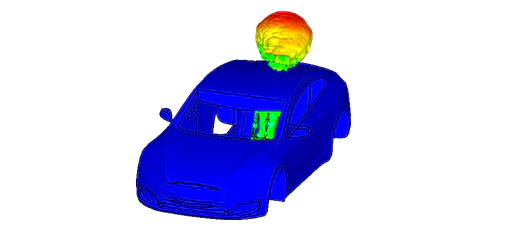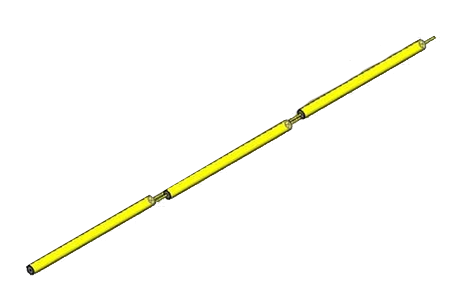Wireless Biotelemetry
Wireless biotelemetry systems allow for the monitoring and transmitting of physiological data from inside the body to external devices without the need for wires. Such systems often rely on implantable antennas to provide reliable and efficient wireless communication between the implanted device and the external receiver. In this application note, we will discuss the design and optimization of implantable antennas for wireless biotelemetry systems.
Antenna Design Consideration
When designing implantable antennas, factors such as biocompatibility, patient safety, and miniaturization must be carefully considered. Antenna size must be minimized while maintaining suitable radiation efficiency and bandwidth to ensure optimal performance. The design should adhere to safety standards to avoid tissue damage.
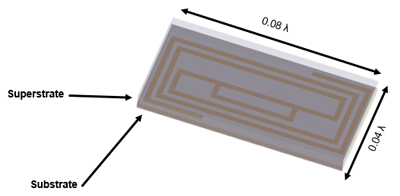
Fig. 1. Rectangular Spiral Antenna
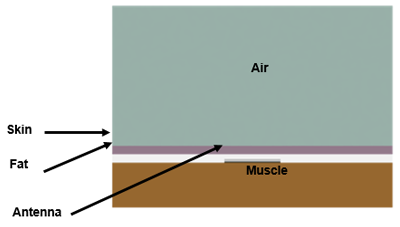
Fig. 2. Antenna in Three Tissue Layers
The rectangular spiral antenna has dimensions of 20mm x 10 mm x 1.653 mm. It is printed on RO3210 substrate (?r= 10.2 and tan? = 0.03) and is covered by a quartz superstrate (?r= 3.78) to prevent undesirable short-circuit between the antenna and the human tissue. The antenna is placed inside a simplified human tissue which consists of skin, fat, and muscle.
The above antenna is simulated, and the following results are obtained.
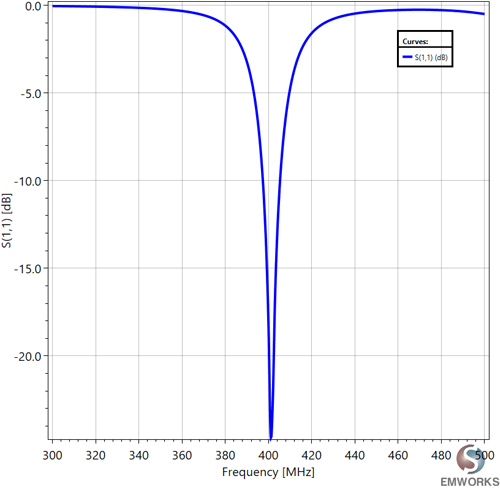
Fig. 3. Return Loss (dB)
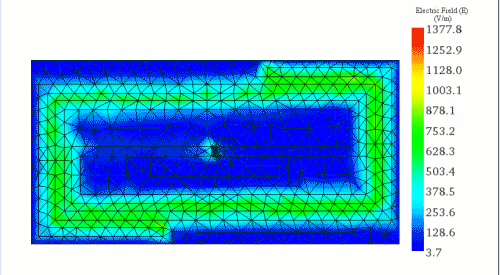
Fig. 4. Electric Field Animation (402 MHz)
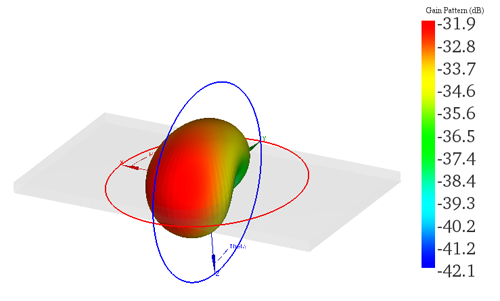
Fig. 5. 3D-Radiation Pattern (402 MHz)
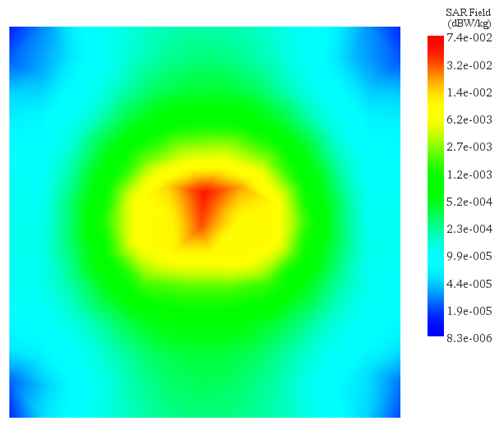
Fig. 6. SAR (402 MHz, Input Power: 5mW)
From the above plots, we can observe that the antenna operates within the frequency range of 390 MHz to 410 MHz, falling within the MICS Band. For an input power of 5 mW, the maximum recorded SAR is 0.07 W/Kg, which is well below the advised limit of 1.6 W/Kg.
Antenna Optimization
Optimizing implantable antennas involves adjusting several parameters such as the length of the spiral antenna, suitable superstrate materials, and the thickness of the superstrate. These factors affect the antenna's resonant frequency, radiation pattern, and efficiency, and must be carefully considered to ensure reliable wireless communication with implanted devices.
Antenna Spiral Length
Changing the length of an implantable antenna can have a considerable effect on its resonant frequency. To investigate this effect, we modified the dimension (L) and observed its impact on the antenna's performance.

Fig. 7. Spiral Antenna
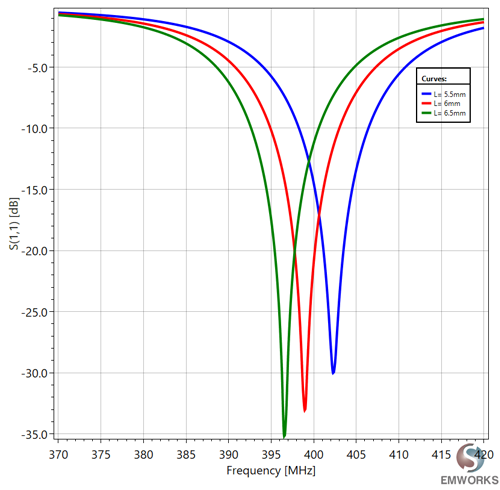
Fig. 8. Return Loss for Different Arm Lengths (L)
An increase in antenna length results in a decrease in the resonant frequency. This is due to the longer arm length, which increases the current path on the patch and the effective size of the antenna. Consequently, the resonant frequency lowers.
Superstrate Thickness and Materials
Optimizing the thickness and material of the superstrate can lead to improved antenna performance. Materials such as Teflon, quartz, and Makor are used, and their effectiveness is compared.
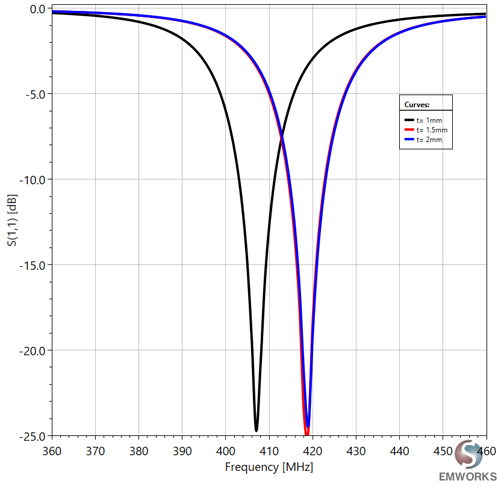
Fig. 9. Return Loss (Different Superstrate Thicknesses)
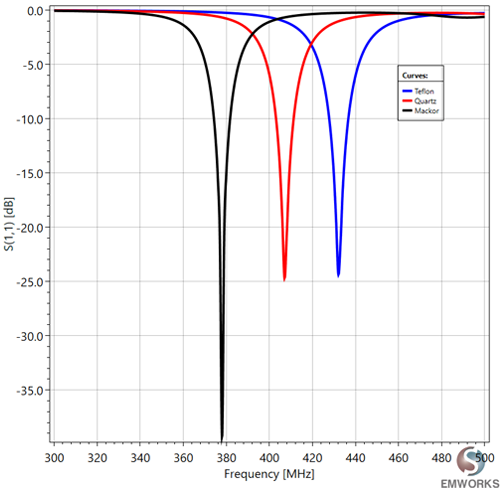
Fig. 10. Return Loss (Different Superstrate Materials)
As the thickness of materials increases, their effective permittivities decrease. As a result, the resonant frequency of the antenna increases.
Likewise, an increase in the permittivity of the superstrate leads to a decrease in the resonant frequency of the antenna. A higher permittivity of the substrate results in a shorter effective wavelength and a lower resonant frequency.
Conclusion
In conclusion, the application note demonstrates the effectiveness of the designed rectangular spiral antenna for wireless biotelemetry within the MICS band, emphasizing its compliance with safety standards for SAR levels. The study highlights the importance of antenna design considerations, such as biocompatibility, miniaturization, and optimization of parameters like spiral length and superstrate characteristics, to achieve optimal performance in transmitting physiological data from implanted devices to external receivers. This research contributes to advancing wireless medical monitoring by ensuring efficient and safe communication between implanted medical devices and external systems.
References
Design of Implantable Rectangular Spiral Antenna for Wireless Biotelemetry in MICS Band J.H. Lee, D.W. Seo, and H.S Lee

